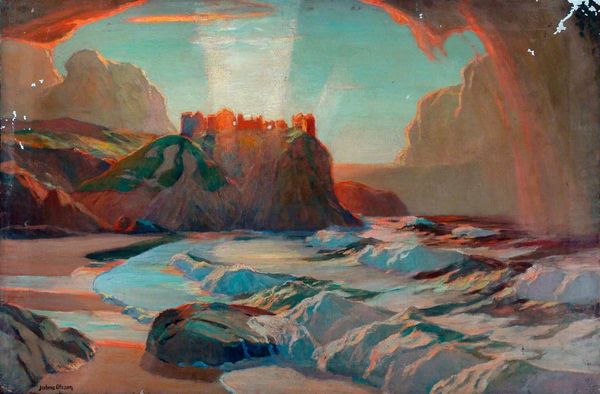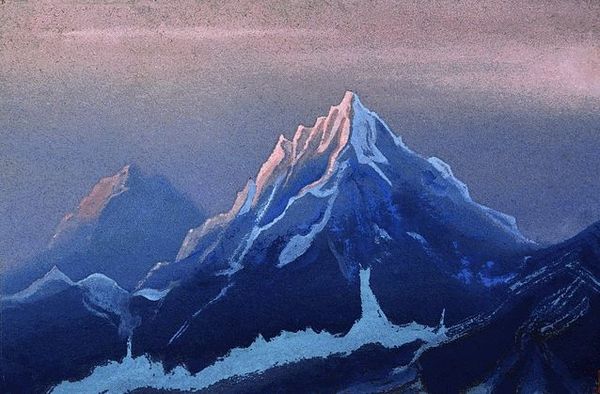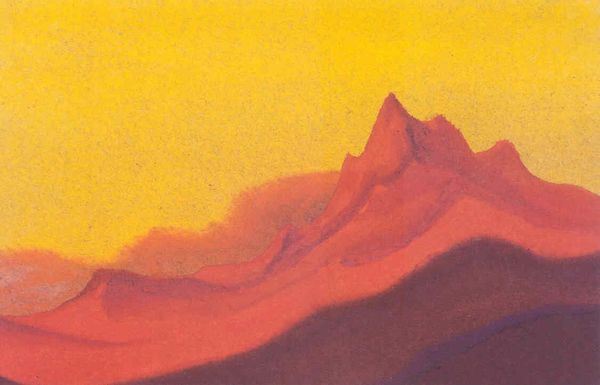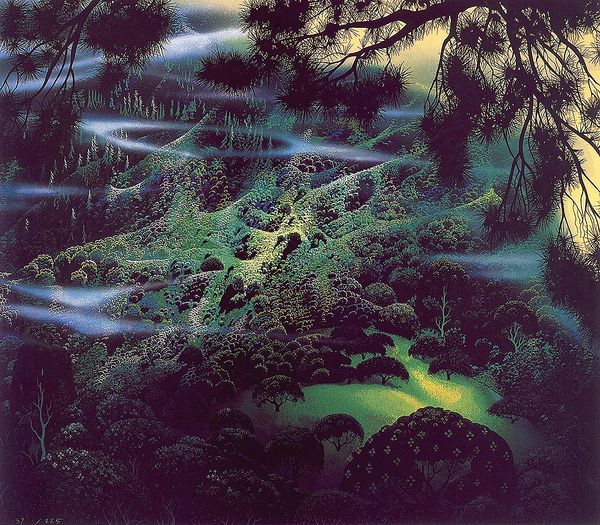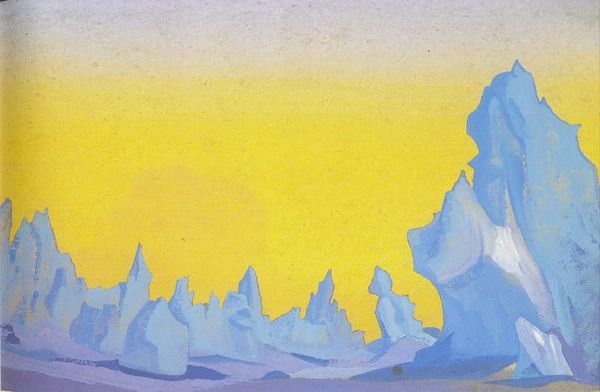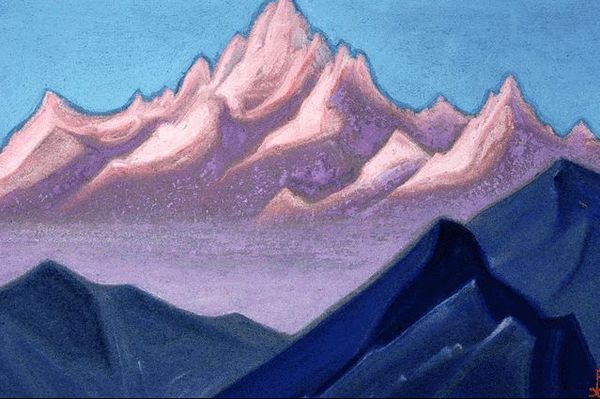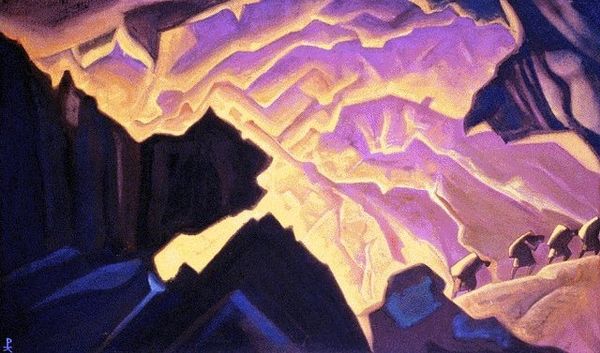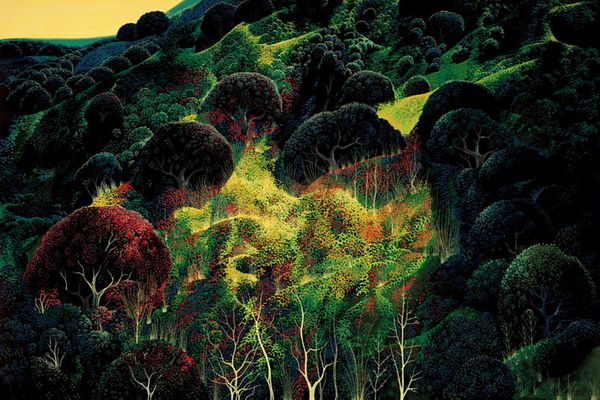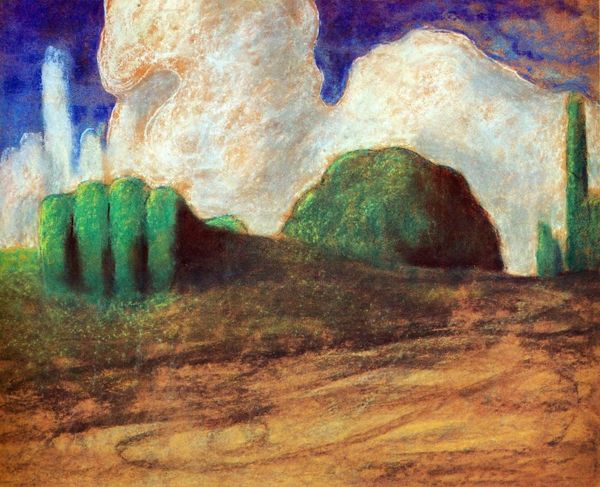
Dimensions: 39 x 53 cm
Copyright: Public domain
Curator: This is Arkhyp Kuindzhi’s "Sunset Effect," painted in 1890. He employed oil paints here, capturing a vivid landscape. What strikes you about it? Editor: Initially, the exaggerated contrast between the frigid blues and those scorching oranges evokes a profound sense of alienation—it’s almost dreamlike, unsettling. Curator: Kuindzhi's interest lies in the materiality of light, wouldn’t you agree? The texture seems almost secondary to the radiant effects. Editor: Agreed. This landscape, it reads as a commentary on industrialism's incursion into previously untouched landscapes. Those fiery hues – are they sunrise, or the insidious glow of encroaching industry? The choice of Northern Renaissance echoes with their complex iconography, layering our interpretation with that legacy. Curator: Absolutely. He was renowned for experimenting with pigments to achieve extraordinary luminosity. It wasn’t merely about representing light but, one might say, materializing it—to explore chemical interaction between oil-paint components, for example, as he captured light effects so well, but often his paints darkened considerably after only a short time. Editor: The Romantic undertones are inescapable here, as the scene resonates with both sublimity and a premonition of environmental damage. He's prompting us to examine our role within these grand narratives of landscape and progress. Considering the labor required to mine those very materials, from pigment creation to canvas production, each element bears its own colonial weight, too. Curator: His almost theatrical deployment of light pushes the boundaries of realism and romanticism, yes. Perhaps this liminal space is about finding common ground, about bringing industrial practices into dialogue with established landscape aesthetics? Editor: Perhaps, but I view it through the lens of eco-criticism – this landscape mirrors a moment of crisis, revealing the tension between the raw beauty of nature and looming human influence, no doubt an industrialised one, considering Russia's sociopolitical context. Curator: I hadn't considered it in such a dark context! Ultimately, Kuindzhi's choices provoke rich material exploration of landscape through innovative artistic means. Editor: And a powerful, visually arresting socio-political statement, reminding us of our historical and contemporary roles in this ongoing drama.
Comments
No comments
Be the first to comment and join the conversation on the ultimate creative platform.

